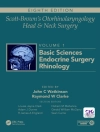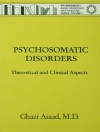Of all the techniques used to treat non melanoma skin cancer, the highest cure rates belong to the Mohs surgical procedure. Critical to this technique is optimal preparation and interpretation of frozen sections. With more than 400 high resolution figures, the Atlas of Mohs and Frozen Section Cutaneous Pathology is the premier textbook on the topic, serving as a highly practical guide to microscopic analysis, diagnosis, and discrimination of common and problematic cutaneous neoplasms.
Highlights of the Atlas include diagnosis of basic and routine dermatologic entities, diagnosis and distinction of rare and/or deadly neoplasms such as dermatofibrosarcoma protuberans and merkel cell carcinoma, a troubleshooting guide dealing with quality control of the frozen section technique, and discussion of new techniques including immunohistochemistry.
Comprehensive and presented in full color, the Atlas of Mohs and Frozen Section Cutaneous Pathology is an indispensable reference for anyone involved with the Mohs procedure, including dermatologic surgeons, Mohs cutaneous surgeons, as well as pathologists and dermatopathologists who perform frozen section analysis of cutaneous specimens.
İçerik tablosu
SECTION ONE …INTRODUCTION.- Mohs and Frozen Section Overview.- Quality Assurance.- SECTION TWO …TUMORS OF THE EPIDERMIS/ADNEXAE.- Histology with Regional and Ethnic Variation.- Benign Epidermal Tumors.- Pseudotumors.- Squamous Cell Carcinoma: Variants and Challenges.- Basal Cell Carcinoma: Variants and Challenges.- Adnexal Neoplasms.- Malignant Adnexal Neoplasms.- Merkel Cell Carcinoma.- Sebaceous Tumors.- Paget’s Disease.- Melanocyte Pathology.- SECTION THREE….TUMORS OF THE DERMIS.- Benign Mesenchymal Tumors.- The Sarcomas.- Lymphoid Pathology.- SECTION FOUR…… SPECIAL TOPICS.- Perineural Pathology.- Cytopathology of Cutaneous Tumors.- Immunohistochemistry Applications.- Histotechnique and Staining Troubleshooting.












